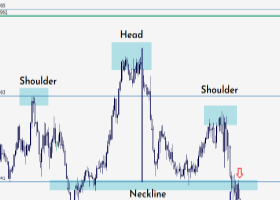On Tuesday gold prices again rose to the $1,200-level, as market players digested mixed U.S. data.
On the Comex division of the New York Mercantile Exchange, gold futures
for June delivery climbed $9.20, or 0.78%, to trade at $1,196.00 a troy
ounce during U.S. morning hours after hitting an intraday peak of
$1,199.00.
Yesterday gold climbed $12.30, or 1.05%, to close at $1,186.80. Futures were likely to find support at $1,168.40, the low from May 1, and resistance at $1,207.40, the high from April 30.
Silver futures for July delivery jumped 14.6 cents, or 0.89%, to trade at $16.58 a troy ounce. On Monday, futures jumped 30.6 cents, or 1.9%, to end at $16.44.
The U.S. dollar index declined 0.1% to trade at 95.48 early Tuesday after rising to an overnight peak of 96.10. The buck was lower after official data showed that the U.S. trade deficit widened 43% to $51.37 billion in March, the highest level since 1996, as exports edged up 0.9% and imports surged 7.7%.
The downbeat report fueled speculation that first-quarter gross domestic product, which showed expansion of 0.2%, could be revised to indicate growth contracted.
The Institute of Supply Management meanwhile said its non-manufacturing purchasing manager's index rose to a five-month peak of 57.8 in April, above forecasts for a reading of 56.2 and up from 56.5 in March. Weak data could boost gold by undermining the argument for an early rate hike.
Copper for July delivery inched up 1.4 cents, or 0.48%, to trade at $2.935 a pound. Prices slumped 0.9 cents, or 0.38%, on Monday to settle at $2.920.
Data issued on Monday showed that Chinese manufacturing activity halted in April, spurred concerns over a slowdown in the world’s second-largest economy.
The downbeat data reinforced expectations that policymakers in Beijing will have to introduce further stimulus measures to incentivize the economy amid lackluster growth.
The People's Bank of China has introduced a series of stimulus measures since November. Those include lowering interest rates twice and cutting the reserve requirement ratios of major banks twice, in order to spur economic activity and boost growth.


